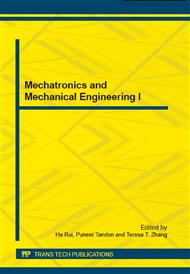[1]
J.C. Salmone: Polymer Materials Encyclopedia. (CRC Press, Boca Laton, FL, 1996).
Google Scholar
[2]
Xu Zhang, Zhi'an Liu, Judong Zhao. et al, in: Magneto-electric composite scale inhibiting equipment of circulating cooling water and experimental studies on its scale inhibition. Industrial Water Treatment. Vol. 33 (2013), pp.34-36.
Google Scholar
[3]
G. J. Limper, J. L. Raber, in: Test of non-chemical scale control devices in a once-through system. Mater perform. Vol. 24 (1985), pp.10-15.
Google Scholar
[4]
S.H. Lee, in: A study of physical water treatment technology to mitigate the mineral fouling in a heat exchanger. Michingan UAS: Drexel University, (2002).
Google Scholar
[5]
Y. Wang, J. Babchin, L.T. Chernyi, et al, in: Rapid onset of calcium carbonate crystallization under the influence of a magnetic field. Wat. Res. Vol. 31 (1997), pp.346-350.
DOI: 10.1016/s0043-1354(96)00243-6
Google Scholar
[6]
Y.I. Cho, C.F. Fan, B.G. Choi, in: Use of electronic anti-fouling technology with filtration to prevent fouling in a heat exchanger. Heat and Mass Transfer. Vol. 41 (1998), pp.2961-2966.
DOI: 10.1016/s0017-9310(98)00011-8
Google Scholar
[7]
Y.I. Cho, C.F. Fan, B.G. Choi, in: Validation of an elcctroinc anti-fouling technology in a single-tube heat exchanger. Heat and Mass Transfer. Vol. 42 (1999), pp.1491-1499.
DOI: 10.1016/s0017-9310(98)00196-3
Google Scholar
[8]
C.F. Fan, in: A study of electronic descaling technology to control precipitation fouling. Ph. D. Thesis of Drexel University USA. (1997).
Google Scholar
[9]
T. Chen, N. Anne, M.D. Yuan, in: Influence of Mg2+ on CaCO3 Formation-bulk Precipitation and Surface Deposition. Chemical Engineering Science. Vol. 61 (2006), pp.5318-5327.
Google Scholar
[10]
J.M. Donne, R.J.M. Nolte, N.A. JM. Sommerdijk, in: A shape-perisistent polymeric crystallization template for CaCO3. J AM Chem Soc. Vol. 124 (2002), pp.9700-9701.
DOI: 10.1021/ja0267573
Google Scholar
[11]
S. Champ, J.A. Dickinson, P.S. Fallon, et al, in: Hydrogen-bonded molecular ribbons as templates for the synthesis of modified mineral phases. Angew Chem IntEd. Vol. 39 (2000), pp.2716-2719.
DOI: 10.1002/1521-3773(20000804)39:15<2716::aid-anie2716>3.0.co;2-q
Google Scholar
[12]
E. Loste, F.C. Meldrum, in: Control of calcium carbonate morphology by transformation of an amorphous precursor in a constrained volume. Chem Commun. Vol. 10 (2001), pp.901-902.
DOI: 10.1039/b101563j
Google Scholar
[13]
L.W. John, D. Farrington, in: PreciPitation of Calcite and Aragonite. Journal of the American chemical Society. Vol. 79 (1957), p.2031-(2034).
Google Scholar
[14]
D.J. Kinsman, H.D. Holland, in: Coprecipitation of cations with calcium carbonate coprecipitation of strontium(Ⅱ)with aragonite between 16 and 96 ℃. Geochim Cosmochim Acta. Vol. 33 (1969), p. l-17.
Google Scholar
[15]
Martin Vendel , Åke C. Rasmuson, in: Mechanisms of initiation of incrustation. AIChE Journal. Vol. 43 (1997), pp.1300-1308.
DOI: 10.1002/aic.690430518
Google Scholar


